Green Building Best Practices
Elements of Modern Green Building
Homeowners and businesses of every size the world over are investing in efficient green building techniques, materials, and technologies. This is a smart investment - for the sake of the environment, and the comfort, well-being, and wallets of the building's occupants.
Elements of modern green building include:
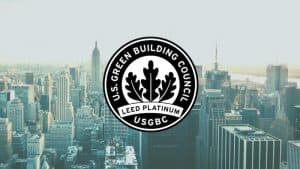 - energy efficient technologies and best practices in developing a property, such as implementing Leadership in Energy and Environmental Design (LEED) standards
- energy efficient technologies and best practices in developing a property, such as implementing Leadership in Energy and Environmental Design (LEED) standards- - energy efficient appliances, windows, and energy & water-saving appliances (such as smart thermostats, LED lighting, and Energy Star products)
- - sustainable use of construction materials and building resources
- - use of low-carbon steel and concrete
- - replacing gas-fired heating, ventilation, and air-conditioning (HVAC) units & boilers with electric HVAC systems and electric or renewable energy-based heat pumps
- - quality insulation and building weatherization strategies
-
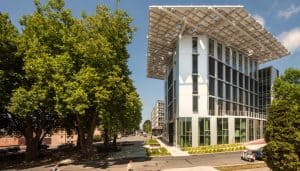
Bullitt Center Seattle - green and cool roofs
- rainwater collection systems
- - solar PV on the rooftop or on the property
- - Home Energy Management (HEM) systems
...as well as other green building solutions (discussed below)
Global Green Building
In its World Energy Outlook (WEO), the International Energy Agency (IEA) identifies pathways for clean energy technological solutions needed to reach global carbon neutrality by 2050. It also details interim goals that will ensure the world is on the path to net zero.
All new buildings should meet modern international thresholds set for high energy efficiency standards, such as the International Energy Conservation Code, and LEED.
"Buildings are currently responsible for 39% of global energy related carbon emissions: 28% from operational emissions, from energy needed to heat, cool and power them, and the remaining 11% from materials and construction."
[quote from - worldgbc.org/embodied-carbon]
According to IEA's WEO, by 2030, in the developed, industrial world, 1/2 of all existing buildings need to be retrofitted to high energy efficiency standards. Buildings should be retrofitted to have clean energy and electricity for core functions such as HVAC.
In the developing world, the number drops to 1/3 of all buildings that need to be retrofitted with energy efficiency upgrades by 2030.
To achieve these efficiency goals, the majority of buildings in cities worldwide must be retrofitted with the latest energy efficiency technologies.
The most straightforward path to achieving these building efficiency goals is the electrification of buildings; additionally, the weatherization of buildings is an optimal solution. Many strategies to achieve optimal building energy efficiency are explored below.
Green Building Solutions
Electrification -
Electrification of buildings includes replacing conventional HVAC systems fueled by natural gas or heating oil (gas furnaces, gas boilers). Conventional HVAC systems should be replaced with electric (or renewable energy-based) heat pumps and/ or electric HVAC units.
Building electrification also involves ensuring that all other major building appliances are replaced with electric or renewable versions, such as electric water heaters or solar water heaters (among other efficient building appliances such as electric heat pumps or geothermal heat pumps).
Readily available renewable energy solutions for buildings, already in consumer markets globally, include solar panels, solar water heaters, and geothermal heat pumps (among others).
Additionally, there is the promising, still in development, hopeful future technology of hydrogen-fueled boilers, and other hydrogen solutions for buildings.
Weatherization -
Many building efficiency solutions detailed in this article also qualify as weatherization solutions, including passive building strategies in which buildings are sealed air-tight (examined below towards the end of this article).
Weatherization of buildings involves hardening the exterior of buildings to extremely warm, extremely cold, other inclement, and other extreme weather, as well. Additionally, double or triple-pane windows and efficient high-tech smart windows are solutions (also discussed below).
Optimal building weatherization solutions are best combined with cutting-edge efficient insulation (as detailed below).
For buildings to meet current global sustainability standards, new buildings should ideally implement the energy efficiency technologies listed here, and all existing buildings should be retrofitted to include these green building efficiency solutions.
Retrofitting existing buildings to meet current energy efficiency standards is one of the most effective measures that can be taken to act on climate globally.
Low-Carbon Solutions for Construction
Here is a brief list of strategies to lower the carbon footprint of construction, mostly with the use of low-carbon options for traditional building materials. This list focuses on viable low-carbon steel and cement, as primary measures to lower the carbon footprint of production processes for traditional building construction.
- - Use of recycled building materials. By using recycled concrete, steel, glass, etc... the carbon footprint of construction can be greatly reduced. These low-carbon construction strategies have been around for a while. The 2012 London Summer Olympics represented an exemplary effort to create vast areas of buildings with low carbon footprints, in part by using the strategy of using recycled building materials.
-
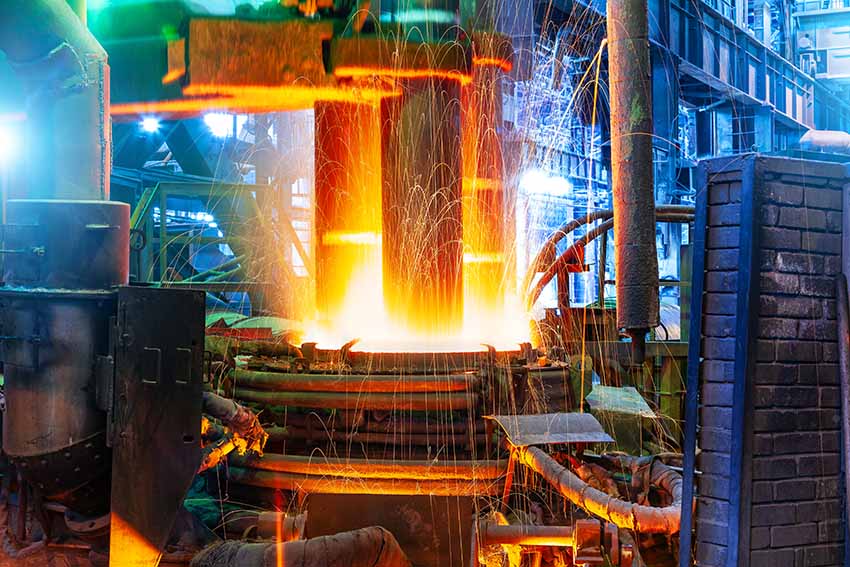
Electric arc furnace - Use of electric arc furnaces to produce low-carbon steel. This production technique for steel can lower carbon emissions from steel by up to 87%. In the future, the emerging technology of clean hydrogen promises to lower the carbon footprint of steel even further, if electric arc furnaces successfully evolve to be fueled by low-carbon hydrogen.
- - Another strategy for producing low-carbon steel is to combine steel production with carbon capture, which, like hydrogen, is an emerging clean energy technology.
- - Use of carbon capture with cement production (cement is the main ingredient in concrete), is yet another low-carbon construction strategy. Among many ideas to lower the carbon footprint of concrete production is capturing and using the CO2 released in the production process as a binding element in the concrete production process itself (as seen with the start-up company CarbonCure).
- - Substituting the clinker used in concrete production with industrial by-product materials like blast furnace slag and fly ash. Clinker substitutes can lower the carbon footprint of cement production and avoid the carbon emissions generated in the chemical reaction of converting limestone to clinker. [See this link for a list of more clinker substitutes].
- - In the future, clean hydrogen might be able to be used to fuel the low-carbon concrete production process. Although the above low carbon strategies will still be needed to manage the CO2 emissions generated through the actual chemical reactions in the cement production process.
The low-carbon construction techniques listed above are growing in use worldwide. For example, recycled concrete is used in over 30% of construction projects globally. The use of electric arc furnaces (which often use steel scrap and other recycled steels), has grown to over a quarter of global steel production.
The use of carbon capture and/ or hydrogen in steel and cement production are still both emerging technologies that need further research and development to become commercially viable.
Energy and Water-Efficient Appliances/ Building Fixtures
These appliances and technologies are commonly used in sustainable properties today:
-
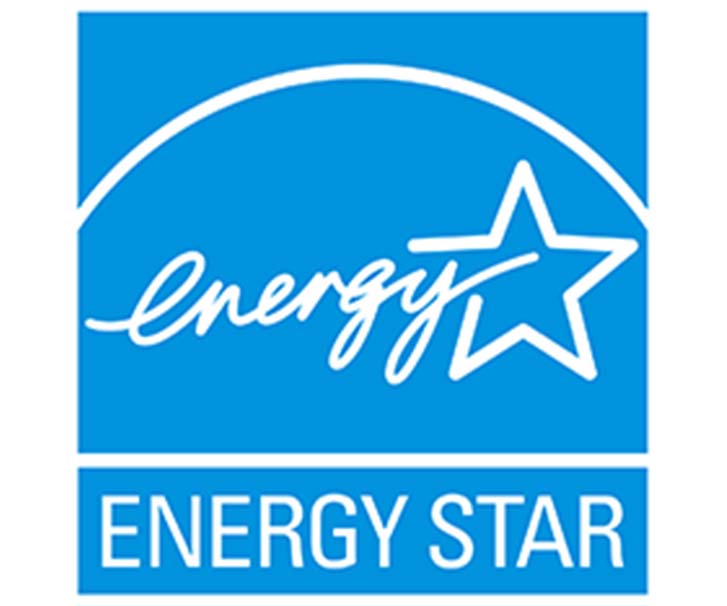 - energy-efficient appliances (Energy Star washers & dryers, dishwashers, advanced electric water heaters, etc...)
- energy-efficient appliances (Energy Star washers & dryers, dishwashers, advanced electric water heaters, etc...) - - energy-efficient HVAC systems, heat pumps
- - LED and CFL lighting
- - smart thermostats
- - green buildings also typically have water-efficient building fixtures such as low-flow toilets and faucets
- - solar technologies
- - rainwater collection systems
Flooring using composite materials, cold-weather epoxy, and/ or radiant heating, can also significantly contribute to building efficiency and energy savings. Another super-efficient upgrade in modern green buildings is solar water heaters.
Optimal energy-efficient home and building appliances use wi-fi enabled smart appliances linked in with home energy management (HEM) systems. [For more on HEM systems and the appliances that link into these networks, please also see: Improving Energy Efficiency - Green Building].
New construction in the state of California is required to be entirely net-zero energy homes (currently for most new residential construction in the state, expanding to include all new commercial buildings by 2030); as explained in the following article:
The Cottle Zero Energy Home; CA's Zero Net Energy Mandate
Solar PV and Solar Water Heaters
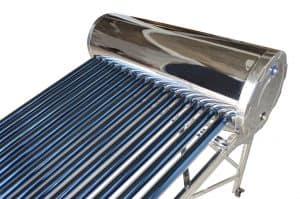
It is helpful for a green building to have its own self-reliant sources of energy. Today, solar photovoltaics (PV) and solar thermal technologies (such as solar water heaters) can do the job excellently.
Recently, there have been dramatic breakthroughs in solar energy technologies that will help further the mainstream use of solar technology, bringing the cost of solar down, and the efficiency of solar up. Shining examples of solar rooftop PV for buildings are in Vauban (Germany's solar settlement) and another is the Bullitt Center in Seattle.
Heat Pumps

There are two main categories of heat pumps - air-source electric heat pumps and geothermal heat pumps. Of the two of them, the geothermal type is based on a renewable energy source.
Geothermal heat pumps are piping systems placed below the ground that transfer heat energy from underground outside of a building to augment/ replace HVAC and water heaters inside a building and act as a central heating and/ or cooling system.
Geothermal heat pumps use the earth's natural energy, the heat energy from underground which is piped in for use with a building's HVAC system and water heaters. Geothermal heat pumps on properties provide energy savings and significantly reduce energy bills.
Currently, a less expensive, more popular, option than geothermal heat pumps, and also a clean energy source of building heating and cooling - are electric air source heat pumps. Electric heat pumps are super energy efficient, and may or may not ultimately be powered by renewable energy; depending on the power supply for the local grid's electricity.
At the point of end-use, electric heat pumps provide clean energy, so if the electricity used to power the heat pump is also clean energy, the heat pump is 100% clean and green.
Electric heat pumps are only powered by renewables if there are renewable energy sources for the electricity supplied by the municipal grid where the building is located (or the property itself may be powered by solar panels or other renewable energy sources). Globally, electric heat pumps are projected to be installed in over 20% of new buildings by 2030.
Electric heat pump water heaters are also rapidly gaining popularity throughout the world.
Rainwater Collection Systems

Becoming the standard of new buildings across the country, rainwater collection systems can be built into properties to provide free and reliable irrigation to the owner’s garden and for many uses in the household or building.
Rainwater collection systems capture and filter rainwater to store and eventually use in the building that collects the water. Rainwater collection systems can be simple or complex, but either way, they are a great way to save on your water bill and conserve water over the long term.
As rainwater collection systems grow in popularity, the necessary collection tanks, filtration units, and water storage and delivery systems are becoming increasingly available in hardware stores and online.
While usually non-drinkable, the collected, filtered, and stored potable water can safely be used for almost any other household purpose. Implementation of a rainwater collection system results in increased water supply for the given property, reduction in water bills, reduction in use from the municipal water supply, and the reduction of stormwater runoff.
Energy-Efficient Windows
 The efficiency of buildings is influenced by the size, quality, and effectiveness of keeping in the heating and air conditioning, of windows installed. Dual-pane windows, and triple-pane windows, increase building HVAC efficiency and reduce energy consumption for HVAC systems.
The efficiency of buildings is influenced by the size, quality, and effectiveness of keeping in the heating and air conditioning, of windows installed. Dual-pane windows, and triple-pane windows, increase building HVAC efficiency and reduce energy consumption for HVAC systems.
In addition, it is possible to reduce lighting and heating demands exponentially by the use of cutting-edge smart glass technology with newly installed or retrofitted high-tech windows.
Using electrochromic smart glass for windows enables you to determine the amount of light you may want to block. The heat from sunlight is regulated by electrochromic smart glass, reducing dependence on HVAC to heat or cool rooms. Building developers using this glass for use as windows indicate that the glass can reduce HVAC costs by over 25%.
Other types of smart window glass include photochromic and thermochromic (responding to light or heat, respectively), which adjust the tint of the glass from opaque to dark in response to varying degrees of sunlight, thus blocking sunlight and cooling interior space.
Cool Roofs
 Cool roofs and green roofs lower surface temperatures on roofs in bright sunlight compared to a conventional roof. This is usually done with greenery, white vinyl, or a solar reflective coating.
Cool roofs and green roofs lower surface temperatures on roofs in bright sunlight compared to a conventional roof. This is usually done with greenery, white vinyl, or a solar reflective coating.
Finishing with a cool roof is a highly recommended strategy since, for example, during summer, air conditioning requirements will decrease; leading to reduced energy costs.
A cool roof reflects and absorbs solar radiation better than standard roofs.
Efficient Insulation
Most people can attribute their high energy bills to poor insulation. Insulation technology, both with new and recycled material, has improved dramatically recently. Modern insulation has come a very long way since insulation materials used asbestos.
While insulation with new materials, especially state-of-the-art insulation, still represents a higher efficiency, some insulation materials today are recycled products that are cheap, readily available, and still represent the latest in insulation technology.
Cellulosic fiber, recycled denim, and even some plant and waste materials are now used for insulation, in addition to fiberglass, polyurethane, and other materials. Having a properly insulated building will reduce energy costs.
Please read - mit.edu/how-make-cities-more-energy-efficient...the following quote is from this article:
"...many buildings would benefit the most from such steps as adding insulation, sealing leaky windows and doors, and replacing older single-pane windows with newer double-pane versions..."
Sustainable Building Materials
Builders are increasingly turning to advanced framing techniques to help reduce their overall building costs and significantly lower their carbon footprint. Advanced construction still has the same overall structural stability and integrity as most standard construction techniques.
However, with advanced framing techniques, up to a third less lumber is used, and framings are quicker to assemble. The cost savings of needing fewer building materials (and less time for construction) are then put toward the incorporation of greater insulation (and other green building strategies), which can lead to overall energy savings, as well.
Many construction material warehouses and retail outlets worldwide are now stocking reclaimed materials for new-builds and home repairs. Recycled and reclaimed materials are commonly used in advanced green buildings. These materials include lumber, recycled plastic, recycled glass, and composite materials such as epoxy.
Not only does the use of reclaimed materials and building supplies prevent the unnecessary use of natural resources by extending the useful life of building materials; but the products are cheaper across the board (while still maintaining quality).
For ideas on organically sustainable alternative building materials (to use in place of traditional building materials), see:
Eco-conscious Building Materials
Increasingly common features used to create today’s green buildings are low-maintenance materials for exteriors and outdoor features.
For example, the use of fiber-cement siding immediately rules out the chance of rot, while at the same time greatly reducing the frequency of painting/ touching-up. Likewise, the use of composite materials for decking and other outdoor features reduces the need for occasional resealing and varnishing - excellent for the pocket and the environment.
LEED (Leadership in Energy and Environmental Design)
To be LEED-certified, a building must maximize energy efficiency, following these basic guidelines for LEED buildings: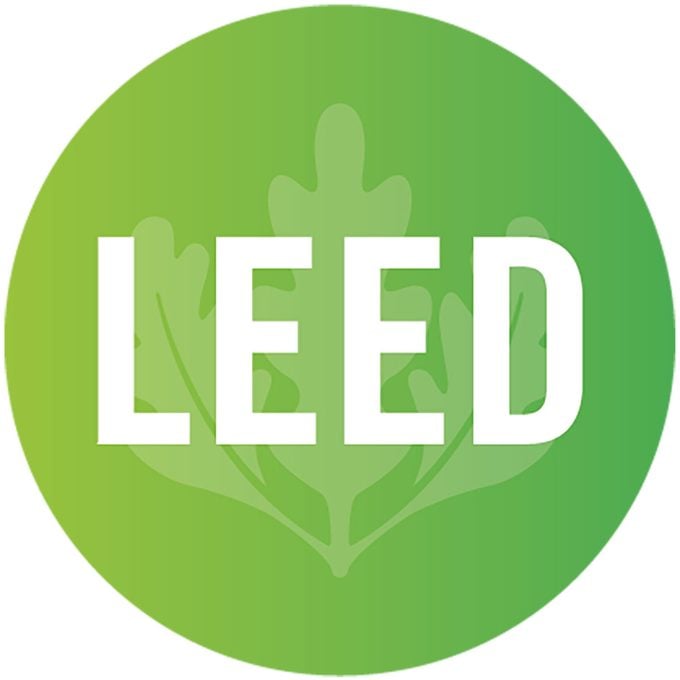
“The five critical areas of focus [for LEED-certified buildings], as laid out by the USGBC, are sustainable site development, water savings, energy efficiency, materials selection, and indoor environmental quality.
Sustainable site development involves, whenever possible, the reuse of existing buildings and the preservation of the surrounding environment. The incorporation of earth shelters, roof gardens, and extensive planting throughout and around buildings are encouraged.
Water is conserved by a variety of means including the cleaning and recycling of gray (previously used) water and the installation of building-by-building catchments for rainwater. Water usage and supplies are monitored.
Energy efficiency can be increased in a variety of ways, for example, by orienting buildings to take full advantage of seasonal changes in the sun’s position and by the use of diversified and regionally appropriate energy sources, which may—depending on geographic location—include solar, wind, geothermal, biomass, water, or natural gas.”
[quote from - britannica.com] - [SEE MORE ON LEED BUILDING STANDARDS FROM - britannica.com/technology/LEED-standards - click the link for more LEED certification requirements]
ALSO SEE>>> Improving Energy Efficiency - Green Building
Vauban, Germany's Solar Settlement; Passive Building
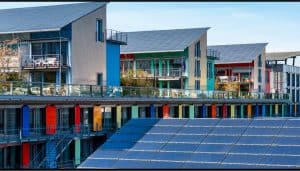
A community of homes and buildings that represent the most energy-efficient group of properties in the world- Vauban, Germany, an ultra-sustainable city district in Freiburg.
Vauban represents the cutting-edge of sustainability in terms of green building.
New homes and buildings built with maximizing sustainability in mind to create the greenest, most efficient, most sustainable properties, are plus-energy homes and buildings like those in Vauban, Germany, that produce more energy than they use.
Most homes in the solar settlement of Vauban, Germany get energy for their own home and for the municipality of Vauban from rooftop solar panels (and from energy generated from biomass in a local combined heat and power plant).
Another European city that employs passive home building standards for all commercial buildings and construction of residential homes in the city is Vaxjo, Sweden.
Ideal buildings in terms of energy efficiency and sustainability are passive design, zero net energy buildings (buildings that produce as much energy as they consume). The ideal sustainable home/ building generates its own energy, either via solar panels on the property, community solar, a geothermal heat pump, and/ or works off of a clean energy microgrid.
Here's an article about the Solar Settlement in Vauban, Germany from Smart Cities Dive-
"Public energy and heat are generated by a highly efficient woodchip-powered combined heat and power generator connected to a district heating grid. 42 building units [in the Solar Settlement] are of the Passivhaus [passive building design] standard...houses adhere to a "plus-energy" standard, producing more energy than they use, with surpluses sold back to the city grid and profits split between each household."
[quote from - smartcitiesdive.com/ex/sustainablecitiescollective/worlds-most-successful-model-sustainable-urban-development]
Here's detailed information on passive building. Passive building design principles include buildings that-
"- Employ continuous insulation throughout [the building's] entire envelope without any thermal bridging.
- The building envelope is extremely airtight, preventing infiltration of outside air and loss of conditioned air.
- Employ high-performance windows (double or triple-paned windows depending on climate and building type) and doors - solar gain is managed to exploit the sun's energy for heating purposes in the heating season and to minimize overheating during the cooling season.
- Uses some form of balanced heat- and moisture-recovery ventilation.
- Uses a minimal space conditioning system."
[quote from - phius.org/what-is-passive-building/passive-house-principles]
See these articles on two of the cities that are featured in this article for employing passive building standards when constructing all commercial buildings and residences in the city:
Vauban, Germany - The Greenest City in Europe
and
Fossil-free Vaxjo - Passivehouse Construction Standards
See the following articles on the latest green building and related energy efficiency technologies:
LEDs, CFLs: Lighting For a Brighter Future
Energy Star - An International Standard
Demand Response: Improving Energy Efficiency
Smart Meters - A More Efficient Use of Utilities
Click & read:
The Bullitt Center Seattle: The World’s Greenest Building